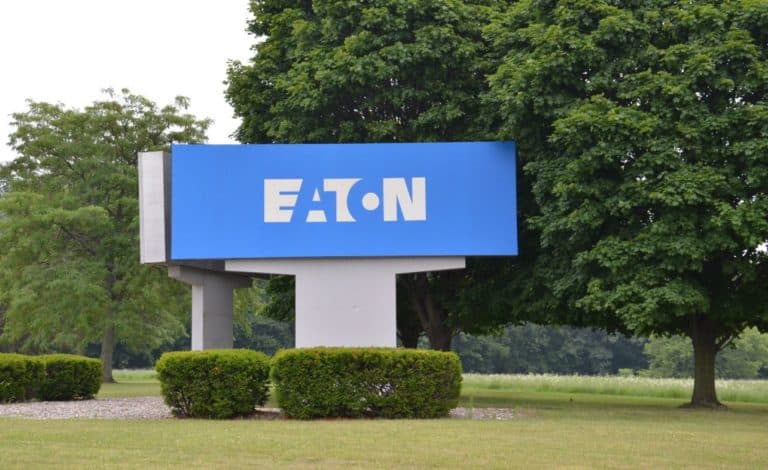Recently we spoke with Niek van Doorn, Sales Manager IT Channel Benelux at Eaton and responsible for the company’s UPS systems. Eaton is a power management company with a huge number of product categories, although we focused on the UPS systems during the interview. These systems operate 24/7 and filter out power failures. In the event of a power failure, the UPS switches to a battery.
Eaton’s UPSs are primarily aimed at small and medium-sized businesses, but for some time now they have also been supplying units for the home and are able to supply customized units for enterprises. However, the largest customers come from the mid-market segment. Van Doorn is responsible for this mid-market segment. His colleagues take care of the data center market and the hyper scalers, where Eaton also has many customers.
UPS is not only an emergency facility but also a piece of security.
A UPS has more features than just a battery that supplies power when the power grid fails. Eaton has further optimized its products over the past few years to make them more feature-rich and more useful to use.
It is important to know that a UPS ensures that the power supply to the hardware connected to it is continuously the same. The UPS continuously supplies 230 volts, which sounds very logical, but in practice, it is not. The power grid does not supply 230 volts continuously. Often this fluctuates a bit up and down. Usually no problem, but at very high peaks or dips, this can damage the hardware. Also, in case of lightning, for example, the UPS can prevent the hardware from having to deal with a huge peak. Ultimately, the most important feature is that not everything fails if the power grid fails completely.
In the Netherlands, we have a reasonably good power network with relatively few failures compared to other countries. It should be noted, however, that this is changing. In the Amsterdam region, for example, the power grid is reasonably overloaded, and there are regular network problems. At the moment, it is not that bad in terms of disruptions, but the network needs to be substantially expanded in order to be able to meet all future electricity demand. The situation in Belgium, for example, is worse. There, the electricity network has become very unstable in recent years, because the country has too little power at its disposal.
Eaton UPSs are enormously software-driven
Eaton UPSs are hugely software-driven. This is necessary because in the end, a UPS is only a short solution. Most companies hang complete servers behind such a UPS, and then the battery of a UPS is pretty empty within about 10 minutes. If you only have your modem and Wi-Fi access points on the UPS in a small office or at home, they will last a bit longer and can still be used on laptops, tablets and telephones. However, there are additional battery modules available to work from the battery of the UPS for a longer period of time.
However, most companies have to deal with a short period of time of usually about 10 to 15 minutes. This may not seem like much, but it is often sufficient to switch on power generators at a data center, which then convert the diesel into electricity. Eaton does not supply these, but you can turn to partners for this. The software layer within such a UPS suddenly becomes very important. As soon as a UPS detects a power failure and the servers are powered by the batteries, the UPS can automatically send a signal to start the generators. Now, not every company will have a generator in the basement, so some will have to do without it. In that case, Eaton has a lot of other software integrations that offer a solution.
There is support for almost every hypervisor, from Hyper-V, VMware, Nutanix to KVM. This way, for example, you can configure which critical virtual servers or applications should be migrated to a remote location where the power has not failed. Or, for example, to the Azure or AWS cloud. You can also choose to shut down non-essential servers, so that the power consumption of the server park is greatly reduced and only the much-needed things continue to run or are migrated. With this kind of extensive support, Eaton really knows how to make a difference.
A lot of innovation in battery technology makes upgrading meaningful
The price of one kWh of electricity has gone up rather than down in recent years. It is therefore important for companies to invest in the right solution on the one hand and to have a good overview of their consumption on the other hand. Eaton has invested in both. As soon as customers need a UPS for a large area, an expert from Eaton comes by to provide tailored advice so that the customer gets the right solution with a good return on investment and the risks are minimized.
On the other hand, Eaton has developed the IPM IT software. This is a software solution for enterprises that allows them to map up to 50 racks and see exactly what’s in which rack and how much power it consumes. This allows them to quickly see which servers are the bulk users and where there is still room for improvement. In addition, it is also possible to link this to other sensors, such as smoke, water or temperature sensors. In this way, for example, in the event of flooding, a choice can be made to migrate critical applications. Also, possible hardware problems can be detected at an early stage if the temperature rises too high.
Eaton has invested heavily in recent years to strengthen its UPS portfolio and become a strong player in this area. Van Doorn sees plenty of challenges and expects to experience strong growth in 2019. We will follow their activities closely.
